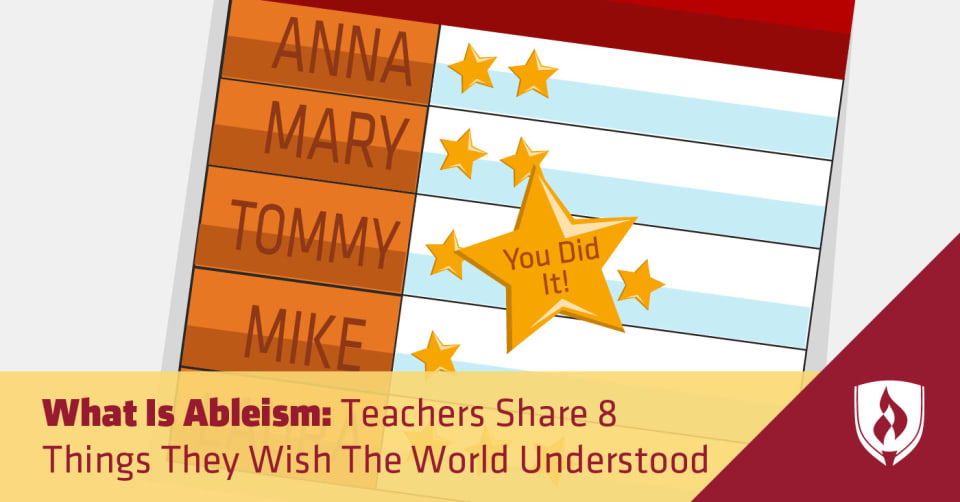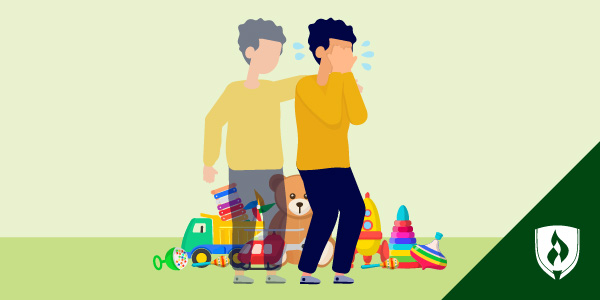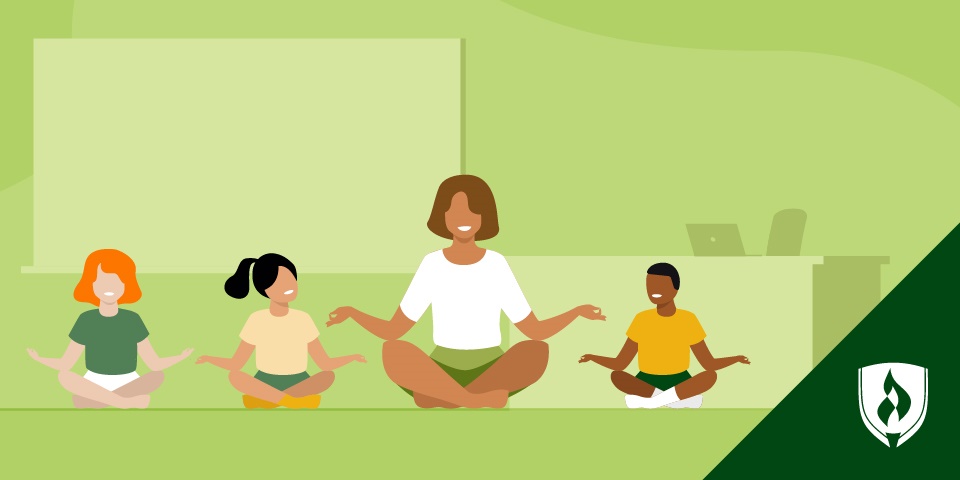What is Ableism? Teachers Share 8 Things They Wish the World Understood
By Brianna Flavin on 08/07/2017

The topic of diversity is gaining more awareness throughout society. But when it comes to education, understanding and appreciating issues of diversity is an even bigger priority. Teachers have the unique position to influence young minds and impact the perceptions of entire generations. This powerful responsibility often turns teachers into advocates for the underrepresented as they push themselves and their classrooms to higher standards of inclusivity and understanding.
So what is ableism? And what does it have to do with a more inclusive classroom? Join us as we dig deeper into this issue and share some expert insights on the topic.
What is ableism?
Stop Ableism defines this as the practices and dominant attitudes in society that devalue and limit the potential of persons with disabilities. This could be anything from overt prejudice to misunderstanding-based discriminations that create barriers for people.
People who do not have a disability, or those who are not close to someone who does, might not understand how the world is wired for people with a disability. The presumption that everyone is non-disabled can create environments that are inaccessible for those who have a disability.
It is a system by which mainstream society denigrates, devalues and thus oppresses those with disabilities, while privileging those without disabilities, according to the Stop Abelism website. In extreme cases... disability is conflated with immorality, stupidity and worthlessness, and those who are disabled may be devalued.
As with so many bias-based problems, ableism can be an unseen default mindset.
I think one of the biggest things that comes to mind when I hear the word ‚ableism‚ is laziness, says Lyndie Walker, Co-Founder and Director of Clinical Services at Toneworks Music Therapy. Accessibility should be a priority of any organization that seeks to offer positive experiences for people, regardless of their ability level.
Why address ableism?
Beyond ethical considerations, ableism is a detriment even to typically able‚ individuals. Walker believes living and learning next to people of diverse ability can be just as valuable as diversity in any other sector.
The opposite of ableism is the idea of neurodiversity, Walker explains. ‚Basically, what that means is that everyone's brain is different and functions differently. The resulting behaviors are obviously going to be different as well, so everyone should have reasonable access to the same things, not as exceptions, but as people representing a normal variation in the human population.
But when ability differences can be as numerous as each specific individual, how could anyone create an environment that will accommodate and encourage everyone? Certainly, there is no easy answer. But the first step is to increase awareness and understanding.
What experts wish the world knew about ableism
The path to a more inclusive educational system and a more inclusive society ‚could be simpler than you think. Check out what these educators and experts who work with populations of varying ability wish the world understood.
1. Everyone has strengths and limitations
I always like to use the term ‚different abilities‚ because this is inclusive language that shifts the perspective toward what children can do as opposed to a quality about them that may be different from the majority of others around them, says Jacqueline Humphries, infant toddler specialist and instructor for the Rasmussen College School of Education.
If we were all laid bare, it would be clear that many of us have severe or perhaps debilitating limitations that may not be as obvious as it may be for a young child who cannot hide theirs, Humphries says.
Humphries intentionally emphasizes ability diversity in her classroom and course announcements. She says she likes to ask students to practice self-reflection, as this is often the key to awareness of human diversity.
2. Children with differing abilities are still children
This one might seem obvious, but in interactions with children who have disabilities, it is easy to focus on differences instead of similarities ‚but that can be a damaging approach.
Children with disabilities aren't unusual, says sign language interpreter and instructor, Roberto Santiago. Like other children, they'll get frustrated when they are hungry or tired, and they'll have good days and bad days.
They want the same things every kid wants, Santiago says. They want to learn. They want to play. They want to socialize. As teachers, our job is to create pathways for those things to happen.
3. Accentuate strengths instead of problems
Along similar lines, Humphries encourages teachers and anyone working with children of varying abilities to be intentional in what they watch for in their students.
I o notice that there are some prejudices, although they are mostly misunderstandings due to lack of knowledge, Humphries says. A significant aspect of this is that educators and administrators in education programs are often taught to look for problems as opposed to accentuating strengths.
4. Don't make assumptions about competency
Generally the misunderstanding is that certain children can't do what others who do not have diagnoses are doing, Humphries says. Often, if the disability is psychological or emotional in nature, there is more prejudice because the symptoms or behaviors can be more frustrating.
But even when a situation seems abnormal, educators shouldn't assume a child is incapable of learning.
As a principal at a school with a high special education population, I want teachers to understand that students with special needs are capable of learning at higher levels when we provide the necessary scaffolds, says Dr. Felicia Durden. Durden points out that the difference between being able to learn or accomplish something often comes down to the support provided.
I observed in a classroom the other day and was amazed at how much the students have grown this school year. It is because our teachers have high expectations for learning for ALL students regardless of their learning needs.
5. A little accommodation can make all the difference
Sometimes effective accommodation can be as simple as allowing students to wiggle around. Sometimes it takes more than that. But being willing to adjust a space, a curriculum or even your expectations can be the difference between children who are thriving and children who are excluded.
For example, Walker facilitates Sensory Friendly Concerts with the Minnesota Orchestra. These events are specifically accommodated for people with disabilities and often feature musicians with disabilities as well. We include them in this community event by hosting smaller ensembles, in a smaller venue, with space to move, fidgets to hold and a variety of seating options both close to the stage and far away, Walker says.
6. Students with disabilities have rights
The choices a school, company or business institution makes about accommodations need to be checked against the law.
There are misunderstandings about how to accommodate deaf and hard-of-hearing students,Santiago says. I have seen resistance to providing accommodations ... some institutions do not think they should be compelled to provide interpreters at all ‚this is wrong on many levels.
Santiago makes a point of helping everyone understand the rights individuals have under the Americans with Disabilities Act (ADA). Santiago says he also tries to provide information on best practices and the rationale behind these practices.
7. Accessibility should be built in, not tacked on
When you plan a lesson or activity you must plan to make it accessible from the beginning, Santiago says. Waiting until someone with a disability shows up and then haphazardly retrofitting your lessons or materials to accommodate that person will almost always fall short. This means they will not get the same educational benefit as their peers.
Santiago explains that many institutions don't really even think of access until someone with a disability arrives. This causes time-consuming or expensive adjustments.
While you can never prepare for every single situation, teachers particularly can equip their lessons (and themselves) best by considering ability differences and how they could be accommodated.
Any time you plan a new lesson, activity or program, spend some time thinking about how you will make it accessible to students with various disabilities.
One example Santiago gives is the use of films in class. Without captions, the rate of speech in films makes them nearly impossible for students with a hearing disability to understand ‚even with an interpreter.
Federal law requires captioned materials to be used by any entity that receives federal funding. Not using them isn't only a violation of best practice; it‚ a violation of the Rehab Act, Santiago says. It also shows students with hearing disabilities that they are not valued.
8. We should celebrate our differences
Students of differing ability levels can fall into a ‚out of sight, out of mind‚ situation when they are separated from the rest of the student body. But Humphries believes an intentional celebration of diversity, including diverse ability, should receive greater emphasis.
I would recommend that all children have specific curriculum that focuses on celebrating differences and building confidence. This is a missing element in our educational system. Humphries says adjusting images to portray more diversity (or reading stories that do so) is not enough to truly teach respect, self-worth and understanding ‚it should be part of a daily practice.
How to be an advocate
If you feel restless to help spread awareness of what ableism is and increase understanding toward people with differing abilities, you might want to consider a career in education. Teachers are uniquely poised to make an even bigger impact as an advocate.
Humphries says educators can seek additional certification to gain the foundational knowledge they need to understand the nature of disabilities and developmental delays in childhood and how that impacts education as a child grows.
And of course, teachers can specialize in special needs education. See if you are the kind of candidate who would thrive in this field in our article, 8 Signs You Are Perfect for a Career in Special Education.
RELATED ARTICLES:




